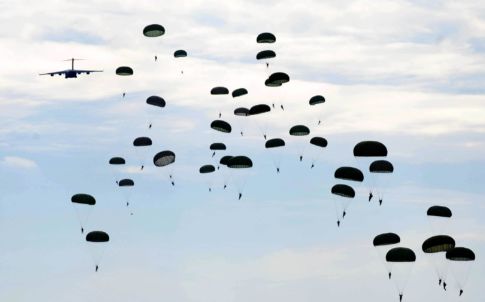NC in Focus: 2017 Veteran Snapshot

Just over 656,000 veterans lived in North Carolina in 2017 according to the most recent American Community Survey estimates. This is a decrease of 10,000 veterans from 2016, a decline of 1.5 percent. Nationally, the veteran population decreased at a similar rate, declining from 18.5 million in 2016 to 18.2 million in 2017, a loss of 292,000 on veterans.
While the veteran population has been steadily declining, the total adult population continues to grow. As a result, veterans comprise a smaller share of the civilian adult population. In North Carolina, veterans now make up 8.3% of the adult population, down from 8.6% in 2016. Nationally, veterans are an even smaller share of the adult population: 7.3% in 2017 versus 7.4% in 2016.
North Carolina’s veterans are much older, on average, then the non-veteran adult population. Forty-five percent (46%) of NC veterans are 65 or older compared to just 18% of non-veteran adults. Just 10% of the state’s veterans are between the ages of 18 and 34, one-third the share of non-veterans (30%) in this age group.
Reflecting this older age structure, North Carolina veterans are more likely to have a disability than non-veterans. Twenty-nine percent (29%) of the state’s veterans reported a disability in 2017 compared to 15% of the state’s non-veterans.
Though North Carolina’s veterans are predominantly male, the female population of veterans is growing. In 2017, more than one in every ten veterans in the state (10.6%) was female, higher than the national average of 8.9%. The population of female veterans increased by over 1,000 individuals in the past year, rising from nearly 68,000 in 2016 to 69,300 in 2017.
The veteran population is somewhat less diverse than the state’s overall adult population, reflecting the relatively older age structure. Among North Carolina’s veterans in 2017:
In North Carolina, like the nation, the largest share of veterans served during the Vietnam era: 35% in North Carolina and 36% nationwide. Compared to the national average, North Carolina’s veterans were more likely to report Gulf War era service (45% vs. 40% nationally) and less likely to have served during the Korean War or World War II (9% vs. 11%). A similar share of veterans reported serving during no specific military conflict (23%).
Compared to their non-veteran peers, North Carolina veterans of prime working age (18-64) are less likely to be in the labor force: 73.8% of NC veterans were in the labor force compared to 75.3% of non-veterans.
This is largely driven by older veterans and the relatively older age structure of veterans overall. Among younger age groups, NC veterans were more likely to be in the labor force in 2017:
Among those in the labor force, North Carolina’s veterans were less likely to be unemployed: 3.8% of veterans aged 18-64 were unemployed in 2017 compared to 5.2% of non-veterans. The difference was most pronounced among the youngest veterans, with 5.0% of veterans aged 18-34 reporting unemployment compared to 8.1% of non-veterans.
North Carolina’s veterans also had much higher median incomes than the non-veteran population. Among the population receiving income, the median veteran income in 2017 was $38,682, more than $11,600 or 43% higher than the median non-veteran income of $27,064.
Reflecting these higher incomes, North Carolina’s veterans were much less likely to be in poverty than non-veterans. Just 7.4% of the state’s veteran population had incomes below the poverty line in 2017, nearly half the rate of the state’s non-veteran adult population (13.4%).
Though non-veterans are more likely to hold a bachelor’s degree or higher (32% vs. 28% of veterans), North Carolina’s veterans are much more likely to have attended some college or received an associate degree (40% vs. 30%). In total, 68% of North Carolina veterans have some college or a postsecondary degree compared to 62% of non-veterans.
Veterans are also much more likely than non-veterans to have completed high school: just 6% of NC veterans reported having less than a high school diploma in 2017 versus 13% of non-veterans.
Need help understanding population change and its impacts on your community or business? Carolina Demography offers demographic research tailored to your needs.
Contact us today for a free initial consultation.
Contact UsCategories: Economic Data
Tags: American Community Survey, economic characteristics, educational attainment, veterans

The Center for Women’s Health Research (CWHR) at the University of North Carolina School of Medicine released the 12th edition of our North Carolina Women’s Health Report Card on May 9, 2022. This document is a progress report on the…

Dr. Krista Perreira is a health economist who studies disparities in health, education, and economic well-being. In collaboration with the Urban Institute, she recently co-led a study funded by the Kate B. Reynolds Foundation to study barriers to access to…

Our material helped the NC Local News Lab Fund better understand and then prioritize their funding to better serve existing and future grant recipients in North Carolina. The North Carolina Local News Lab Fund was established in 2017 to strengthen…
Your support is critical to our mission of measuring, understanding, and predicting population change and its impact. Donate to Carolina Demography today.